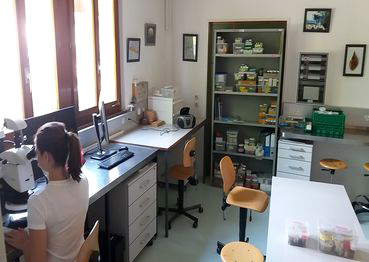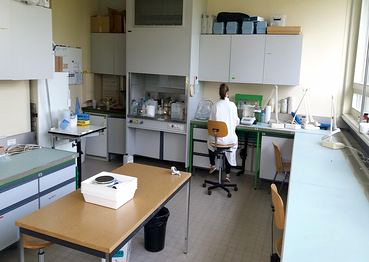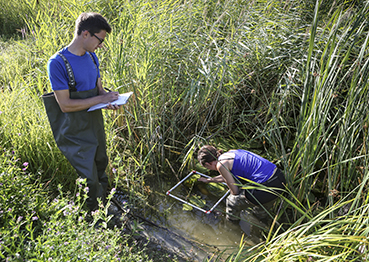The aquatic ecology laboratory uses its know-how in the following areas:
- Sorting, identification and sampling of aquatic macroinvertebrates
- Identification, sampling, biometry and marking of fish
- Identification and sampling of aquatic flora
- batrachological inventories
- Physicochemical analyses and measurements (water from rivers, ponds, lakes and other watercourses)
- Skeletochronology (scalimetry, otolithometry, etc.)
- Telemetry (RFID, radio, acoustic, P-Sat)
- Echo sounding
The laboratory is divided into two areas:

Laboratory in the old farm (3 equipped work places)

Laboratory in the central building (5 equipped work places)




